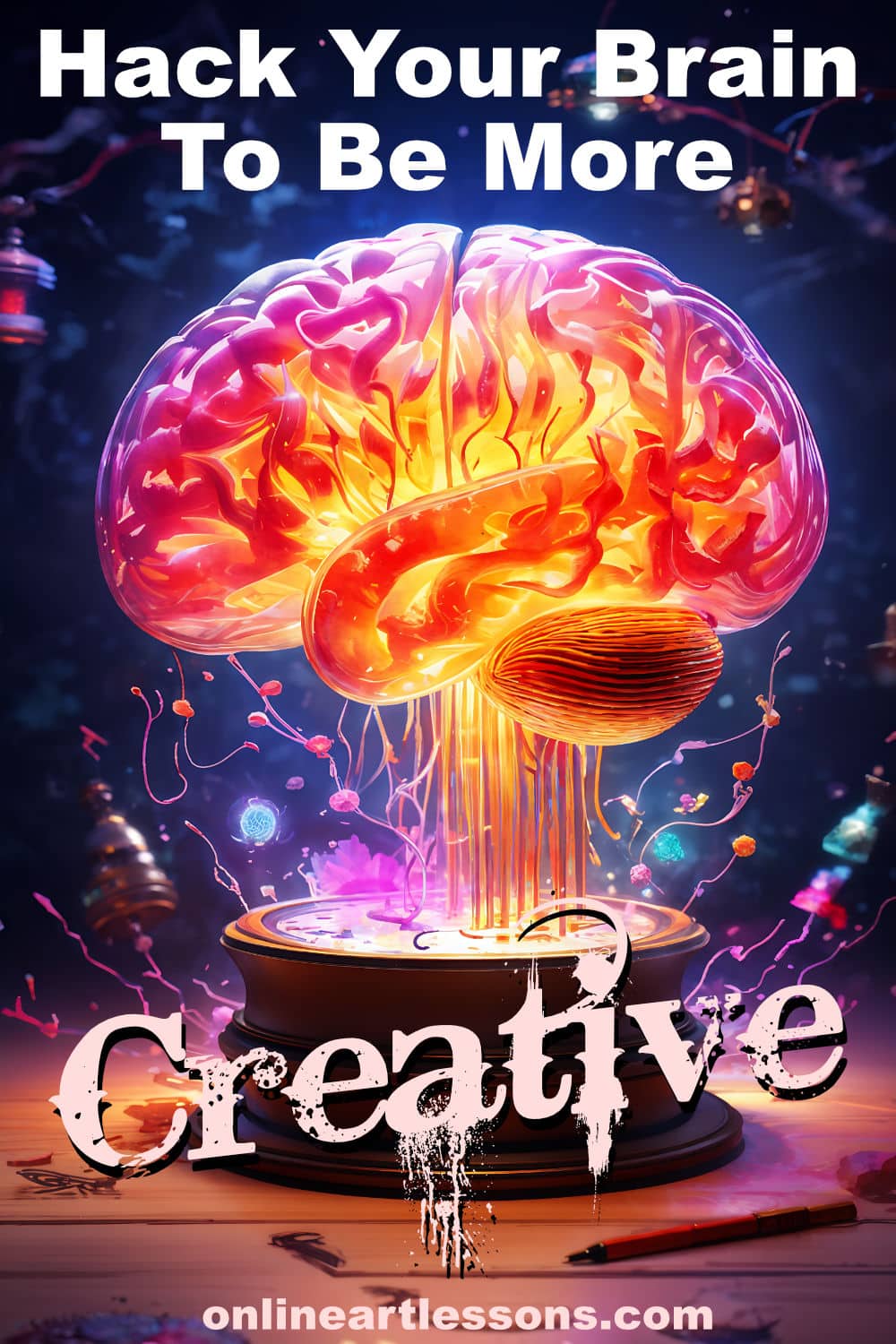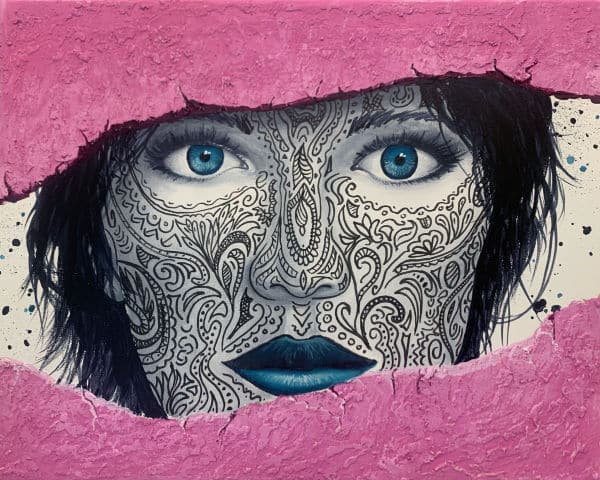Are you ready to unlock new levels of creativity in your art?
Exciting new research has just been unveiled, offering fresh insights into how we can tap into our creative potential.
Let’s dive into what this study teaches us and how you can apply its findings to become a more creative artist.
The research focused on jazz musicians jamming on their guitar, improvising as they played. They had beginner as well as expert guitarists complete the experiment. By monitoring their brain waves as they improvised, scientists uncovered how these musicians enter a state of “flow,” where creativity feels effortless. This study not only sheds light on musical improvisation but also offers valuable lessons for visual artists seeking to enhance their creative process.
In this article I will show how you can use a similar process called doodling to improve your creativity.

The Research
The study revealed that creative flow is associated with optimized domain-specific processing and reduced cognitive control, facilitated by extensive practice and experience, as evidenced by differing brain oscillations in expert and non-expert jazz musicians during improvisation.
So what does all this mean, let’s break it down.
Optimized domain-specific processing:
Imagine you are building castles with wooden blocks. At first, you might not know how to make them tall without falling over. But if you keep playing and building every day, you get really, really good at it. So good that you can build them quickly and make them super tall and strong without even thinking hard about it. That’s like your brain becoming a superhero at doing something it practices a lot!
Reduced cognitive control:
Imagine you are coloring in a coloring book. Sometimes you try to stay perfectly inside the lines, and you think really hard about every move you make. But then, there are times you just scribble and color however you feel, not worrying about the lines and not thinking too much about it. That’s like letting your hands and the pencils do the fun stuff without your brain telling them to be so careful all the time.
Facilitated by extensive practice and experience:
The more you practice the better you become at it.
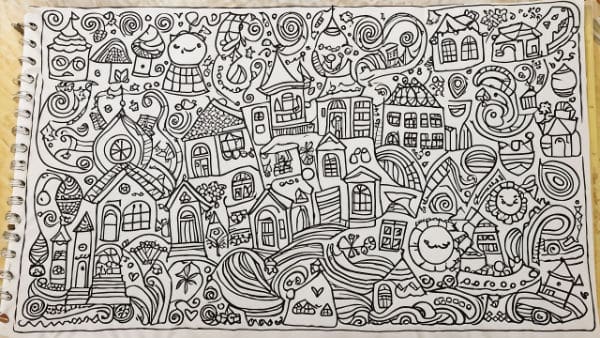
How Can Artists Become More Creative?
Based on this research there are many ways for us to become more creative and improve our imagination. Some of them are freeform drawing, gesture drawing, plein air sketching, and collaborative art making. We will however discuss the one I think is the best “equivalent” to jamming on a guitar.
Doodling
Doodling, or engaging in spontaneous, unstructured drawing, can serve several purposes that support the conditions for achieving a flow state, much like those observed in expert musicians during jazz improvisations:
1. Reduced Cognitive Control
Doodling can ease the grip of overthinking. When you let your thoughts drift and your hand glide without restraint, you dial down the inner critic and analytical chatter that often blocks creativity. This opens the door to a state much like flow, where creativity unfolds more naturally.
2. Sensory and Motor Engagement
Just like strumming a guitar or brushing paint onto a canvas, doodling is all about the movement of your hand across a page to bring shapes and images to life. This blend of touch and motion wakes up the brain’s sensory zones, leading to a state of embodied cognition where you’re fully absorbed in what you’re doing — essentially, becoming one with your creative task. It sets the perfect stage for diving deep into the flow.
A state of embodied cognition is when your mind and body are working together in such a way that your physical actions and environment influence your thinking and understanding. Imagine it like this: when you’re dancing and you can feel the music with your whole body, not just hear it with your ears, and that feeling helps you move in rhythm to the music. Or when you’re drawing, and the way the pencil feels against the paper guides what you create. Your body isn’t just a tool for your brain; it’s part of how you think and understand the world. It’s like your mind and body are teammates, working together to help you learn and create.
3. Encourages Mindfulness and Present Moment Awareness
Doodling can serve as a calming practice, drawing your focus to the present. This attention to the “now” plays a key role in reaching a state of flow, where time seems to stretch or shrink, allowing you to become deeply absorbed in what you’re doing.
4. Lowers Self-consciousness
The simplicity and low-stakes nature of doodling (since it doesn’t need to result in a polished piece of art) can reduce self-consciousness and fear of judgement, making it easier to enter a flow state. This mirrors the research findings where a reduction in self-monitoring activities in the brain correlates with higher flow states.
5. Promotes Spontaneous Ideation
Doodling can be a great way to let your creativity run wild, helping fresh ideas and connections pop up naturally. It’s a bit like the “throwing ideas at the wall to see what sticks” approach mentioned in the study. Although the research points out that the pros often find their groove through fine-tuning their specific skills, doodling can still be a solid stepping stone for anyone, no matter where they are in their creative journey. It’s a way to mix that free-flowing creativity with honing your craft.
Okay, Nolan You Convinced Me, How DO I Start Doodling?
Maybe we should first take one step back and answer the question, what is doodling anyway?
Doodling is when you draw simple shapes or designs, often without thinking too much about what you’re creating. It’s like letting your hand take a little walk across the page while your mind is maybe focused on something else, like chatting on the phone, listening to a lecture, or just daydreaming. Doodles can be anything from random lines and squiggles to more detailed little sketches of characters, objects, or patterns. The cool part? While it seems like just a fun way to pass the time, doodling can actually help you concentrate, spark creativity, and even give your emotions and ideas an outlet to express themselves.
Remember those silly little picture you used to scribble in your school book as you listened to the teacher waffling on about a bunch of nonsense? Those where doodles.
Some people draw little faces, others little figures, yet others scribble all random shapes? What did you use to doodle when you were in school?
Freeform doodling is probably the most common way to doodle: Begin with a blank sheet of paper and allow yourself to doodle without any predetermined goal or subject. Let your hand move freely, creating shapes, patterns, or abstract forms as they come to you.
Let your mind wander as you do so that you are not concentrating too hard on what the item looks like that you are drawing. It’s okay if you end up with a page full of ugly scribbles. The doodles don’t need to look pretty or even make sense. Just draw what pops into your mind.
This is not about creating a masterpiece, this is all about training your mind to spit out creative ideas.
Here are a few techniques you can try to get you started:
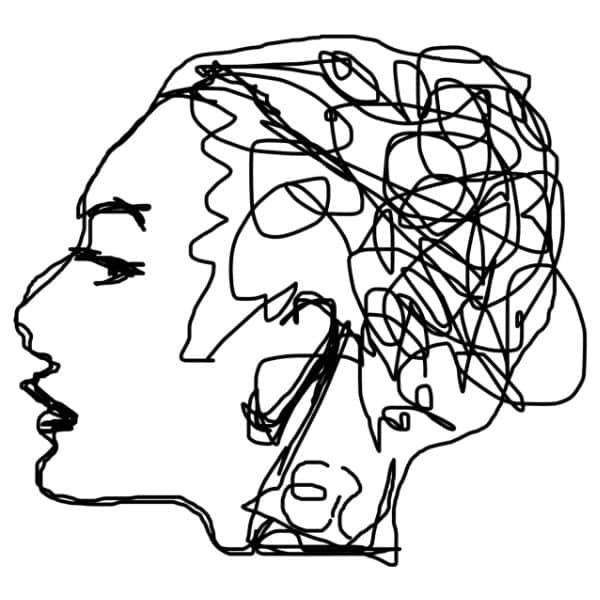
Continuous Line Doodling: Start with a point on your paper and keep your pen down, creating a continuous line that twists, turns, loops, and crosses over itself. If your brain tells you to squiggle, then squiggle the line. If your brain tells you to draw looping petals, then draw continuous looping petal shapes. The challenge? Try not to lift your pen until you feel like your doodle is complete. This technique is great for loosening up and can lead to some surprising shapes and patterns.
Pattern Play: Choose a simple shape or pattern (like circles, dots, dashes, or zigzags) and start repeating it across your page. Let the patterns flow and change as you go—make them bigger, overlap them, or switch up the pattern entirely whenever you feel like it. This can be very meditative and a neat way to see how variations create complexity.
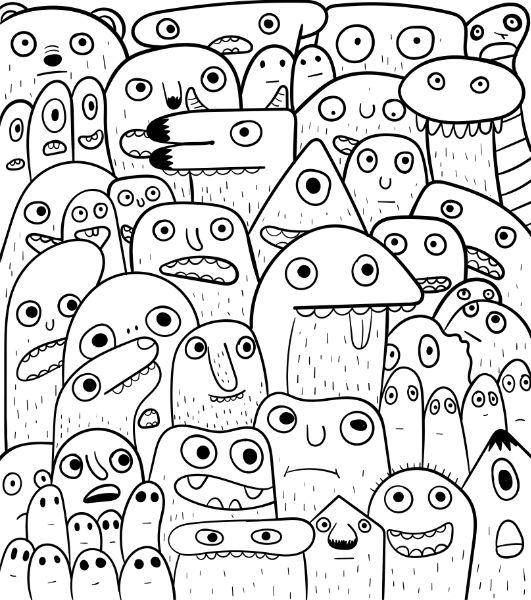
Little Aliens: (or any other object like cows or dogs or people) Draw basic little alien faces, making each look different. Maybe one has egg shaped eyes, the other star shaped eyes, the other a long skinny neck and so on. As you draw your imagination will kick in and thinking of differences between each will start to flow naturally.
Blind Contour Doodling: This one’s a bit of an adventure. Without looking at your paper, draw an object that’s in front of you. The key is to not peek until you’re done! Your lines may not end up where you expect, but that’s the fun part. Blind contour doodles often end up abstract and interesting, capturing the essence rather than the exact appearance of the object.
Scribble Art: Start with a random scribble on your page — really let your hand go wild here. Once you have a scribble you like, look for images or patterns within it. Use shading, lines, or more scribbles to bring those hidden pictures to the forefront. This technique is fantastic for sparking imagination and can reveal some unexpected artwork.

Nature-Inspired Doodling: Take inspiration from nature — whether it’s leaves, flowers, clouds, or the patterns on a butterfly’s wings. Start doodling elements inspired by what you see, but let them morph and evolve on the page. This method connects you with the natural world and allows for organic, flowing designs.
Doodle to Music: Put on some music, any kind that you like, and let your doodle be influenced by the sound. Is the music fast? Maybe your lines are jagged and quick. Is it slow and smooth? Perhaps your doodles become wavy and flowing. Notice how the music affects your hand and your mood.
Breathe and Doodle: Start with a deep breath in and as you breathe out, draw a line. Let your breath guide your doodle. If you’re breathing in, maybe your line goes up; if you’re breathing out, maybe it wanders down. It’s all about syncing your breath with your doodle moves.
and let’s not forget the most popular doodling style of all…
Zentangles: Zentangle is a meditative art form that’s all about creating beautiful patterns through structured, repetitive strokes.
To get started, you’ll need a clean piece of paper and a fine-tipped pen. Begin by drawing two “strings”. A string is a simple, squiggly line that will serve as the foundation for your patterns. Now, choose a section of your string to start filling in with a pattern, or “tangle.” Tangles are made up of simple lines, dots, curves, shapes and orbs. Focus on drawing one stroke at a time, allowing yourself to get lost in the rhythm of creating. There’s no right or wrong here; the goal is to relax and let your creativity flow. As you become more comfortable with basic tangles, experiment with shading, varying line thickness, and combining patterns. Remember, Zentangle is not about the end result but the process of getting there, offering a peaceful escape into creativity.
You can follow the lesson of the Mandala Portrait by clicking the image above. There I show you how to draw and imagine these zentagles.
At first you will find that doodling is difficult because your brain is not used to serving up ideas at random like this. This is where the final finding of the research comes into play.

The Secret Sauce of Creativity
Delving into the research findings, it became clear that seasoned musicians had a knack for slipping into the creative zone, improvising with ease, crafting more pleasant tunes in the process.
It might not come as a shock — practice makes perfect, as the saying goes. Yet, it’s reassuring to have the research back up what many of us have always suspected. Experience doesn’t just make you better; it fine-tunes your ability to tap into your well of creativity on cue.
As you accumulate “brush hours” you are also building up your repetoire of techniques you can draw on when tackling a creative task. Having more tools in your toolbox means you have less to figure out and more options to work with often allowing your brain to instinctively tell you what to do. In other words you want to get to that point where you are not having to think about every stroke you make, they must flow almost effortlessly.
What’s truly fascinating is how this ‘effortlessness’ is a product of countless hours of dedicated practice, exploration, and sometimes, frustration. It’s a reminder that the most spontaneous-seeming creativity is often built on a foundation of hard work and persistence.
Moreover, the study underlines the importance of pushing beyond the basics, encouraging you to explore and experiment with your chosen medium. This is where true innovation and creativity flourish. By stepping out of their comfort zones, experienced musicians are able to discover new rhythms, melodies, and harmonies. You can do the same with your pencils and brushes.
In essence, the ‘secret sauce’ of creativity isn’t so secret after all. It’s about embracing the grind, loving the process, and continuously seeking to understand your craft on a deeper level. The more intimate your knowledge and connection with your art, the more freely your creative juices flow. So, whether you’re strumming a guitar, painting a canvas, or drawing on a piece of paper, remember that every step of the journey counts towards unlocking your full creative potential.
If you want to work on improving your creativity follow the techniques in this tutorial. I encourage you to get yourself a sketchbook and fill it up with doodles and sketches. (I do have a course on sketching that you are welcome to follow as well.)
If you are looking for even more ways to enhance your creativity, you can read my article on 10 Ways to Beat Artist’s Block.
Pin Me
